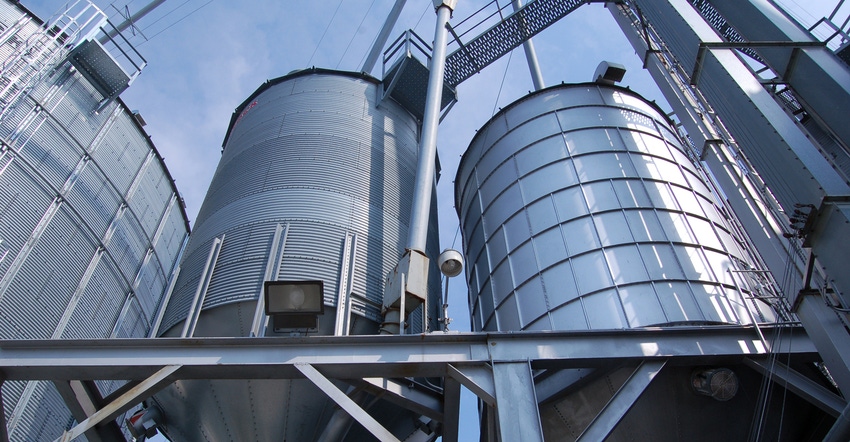
Is there is a rusty spot on an older bin that needs attention? Are you sure all motors on augers and fans will kick on when you flip the switch?
If you’re not 100% confident, Gary Woodruff says now is the time to address these issues. Get your older bins and grain handling equipment in top shape before harvest season arrives. Woodruff, a district sales manager and grain storage specialist with GSI, offers more advice.
Related: Clean grain bins thoroughly before refilling
What kind of structural checks for safety should you make on an older bin? How often should you make those checks? Who should do them? You can do your own initial inspections and do many of the repairs. A yearly inspection is a good practice. Look for these four things:
1. Rusting. A bin should not have any rust present, as that will eventually damage the bin’s integrity. If bad, those parts should be replaced by your bin dealer. If the rust is minor, wire-brush the surface to remove the rust. Use a high zinc-content paint to prevent reoccurrence of the rust.
2. Holes. Holes need to be repaired, and missing bolts should be replaced. Standing in the bin in the daylight is the best way to find holes.
3. Loose or damaged parts. Damaged floor parts should be replaced. Any loose or damaged parts on the door, ladder, cage or stairs need to be properly secured or replaced.
4. Concrete issues. Some minor cracks in the concrete can be expected, but they should be painted or caulked. If after a year or two they widen, or if sections of the concrete start moving, your bin dealer should do a thorough inspection. Have them make repairs or a replacement if necessary. Cutting costs by not using the right quality and amount of concrete and steel reinforcement is almost always very expensive if you look 10 years into the future.
What kind of maintenance should be done on in-bin augers, fans and sweeps? It is critical to do any maintenance on in-bin augers and sweeps before you fill the bin. Check and lubricate where needed. Power sweeps particularly will have a gearbox or other points that need lubed or greased.
Fans on a full bin are more accessible, but again, they must work as the bin fills. So, test and check them a few weeks before the bin is filled. Make sure they are good to go in advance.
Are there standard procedures for testing unloading sump augers, fans and so forth to make sure motors and bearings are in good shape before refilling the bin? Unfortunately, to be nearly certain, the only way is to take the motors to a shop and have them inspected. But at least check for anything such as wiring or covers that show wear or damage. Run the motors. It’s good to make sure voltage is where it should be. If an amperage meter is available, utilize it to make sure the motor isn’t running too many amps.
Just thoroughly cleaning all electrical boxes and retightening all wire connections back to the main breaker box is important. It can prevent an untimely failure during the time grain is in storage.
About the Author(s)
You May Also Like




